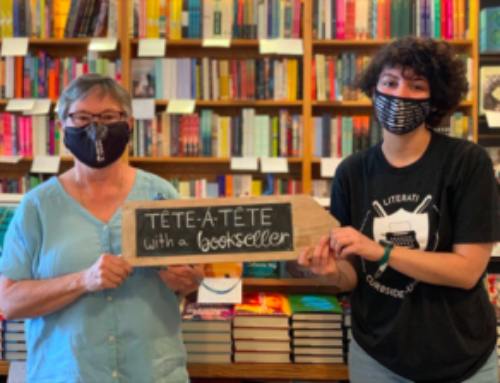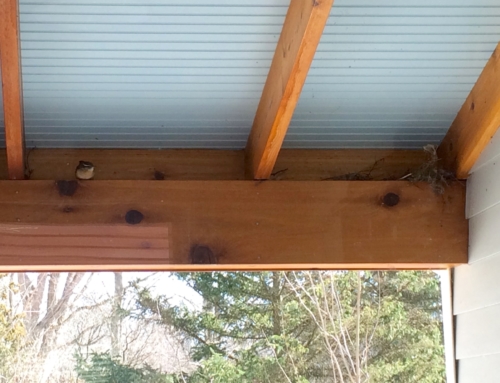 Standing among Susana Allen Hunter’s quilts, on loan from The Henry Ford Museum, at the Grand Rapids [Michigan] Art Museum the other day, I felt waves of admiration and gratitude and poignancy. Each “improvisational quilt”—as Hunter’s patchwork quilts have been dubbed—has a palette I want to work with, somehow, even though I’m a writer and my medium is words. Many of the quilts, which do indeed as their curator notes feel “abstract, asymmetrical, and modern,” are mildly frayed, a reminder that there was nothing precious about this artwork. In fact, any one of the quilts could have been part of a heap of seven—or ten—used to keep a child warm through cold winter nights in a cabin insulated with magazine pages.
Standing among Susana Allen Hunter’s quilts, on loan from The Henry Ford Museum, at the Grand Rapids [Michigan] Art Museum the other day, I felt waves of admiration and gratitude and poignancy. Each “improvisational quilt”—as Hunter’s patchwork quilts have been dubbed—has a palette I want to work with, somehow, even though I’m a writer and my medium is words. Many of the quilts, which do indeed as their curator notes feel “abstract, asymmetrical, and modern,” are mildly frayed, a reminder that there was nothing precious about this artwork. In fact, any one of the quilts could have been part of a heap of seven—or ten—used to keep a child warm through cold winter nights in a cabin insulated with magazine pages.
The whole GRAM gallery has a subtle fragrance of old fabric, easy to miss as you get lost, as I did, in the colors and textures (so many varieties) and stitches (hundreds of thousands, each one by hand) and especially in the imaginative leap I couldn’t help making into the crowded two-room cabin where Hunter’s creativity lived.
Hunter (1912-2005), an African American sharecropper lived with her family in Wilcox County, Alabama, near the renowned Gee’s Bend quilting community. They raised corn, cotton, hogs, chickens, and cattle, under circumstances (tenant farming and Jim Crow) that virtually ensured they’d live hand to mouth. Most of the cutting, piecing, and sewing of the hundreds of quilts took place during the winter months of the 1930s through the 1970s, when fully half the family’s living space was given over to quilt making.
Hunter’s grandson Tommie Hunter, who visited GRAM, remembered his grandfather saying, you quilt too much, but he said this with a twinkle in his eye and painted a scene of industry and contentedness. In any case, Susana Hunter quilted on and on through many years of farming and child rearing, often delivering her quilts to households that needed them—due to fire, death, sickness . . . all of which are especially trying events when you’re poor and living in one of the poorest counties in the United States. Hunter’s quilting, it seems, was so well regarded in her community that people brought her fabric. Her grandson told us she rarely purchased material.
Jeanine Head Miller, Curator of Domestic Life (how’s that for a title!) at The Henry Ford and caretaker of the Hunter quilt collection, described the Make Do Culture of Southern share croppers: It would have been a point of pride for Hunter to make something pretty from nothing. And nothing went to waste. How could I not be struck hard by the timeliness of this story. Has there ever been a more wasteful time in America than now? And isn’t it interesting to know about this outsider mid-century-modern artist whose quilts remind me an awful lot of paintings I’ve seen from the period?
When Hunter passed away, her descendants found a stack of a hundred quilts stored beneath the mattress of a bed Tommie Hunter remembered, laughingly, as “very high.” Because he’d spent his working life at Ford Motor Company, he thought to bring the quilts to The Henry Ford, in Dearborn, Michigan, which now preserves thirty, quite possibly the largest collection of quilts by a single quilter in the world.
Click here to view the Susana Allen Hunter collection and a photograph of the artist.









Leave A Comment